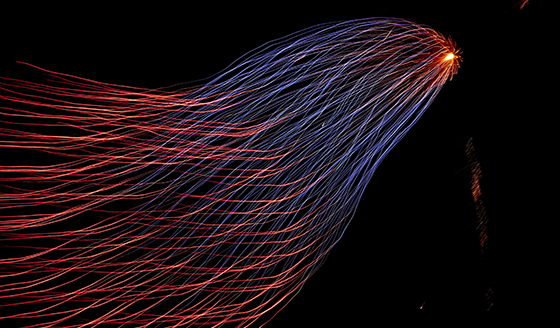2022-06-29
With the continuous changes in the domestic and international energy situation, and the goal of "double control of energy and carbon" The higher requirements put forward promote the further excavation of energy efficiency. With the deepening of equipment energy efficiency technical transformation and the investment and construction of various new energy equipment, it is difficult for the traditional planning and scheduling method to achieve a balance between cost and benefit. It is necessary to achieve the maximum efficiency through refined energy data collection, analysis and optimization control. Energy asset value and energy carbon dual control.
For the collection, analysis and optimization control of energy data in the scientific and technological circles, one path is through the energy system Quantitative analysis of mechanism model research is carried out to achieve white-box formula derivation and verification. Usually, relevant modeling analysis is carried out on the transient state and steady state of the system to determine the safety boundary of system operation, thereby realizing highly automated control. This route is an efficient and safe way to realize highly deterministic energy sources and transmission lines. In view of the construction of various new energy systems represented by new energy in recent years, as well as the increase in the volatility of the energy load side, the security boundary of the system is gradually being challenged by the natural randomness of this type of system. To this end, the scientific and technological community has gradually introduced artificial intelligence technology represented by deep neural networks for model training and simulation analysis of energy systems, and by replacing empirical formulas with data-driven methods to generate general-purpose energy models, so as to better realize Optimization of energy systems. From the perspective of terminal energy consumption, there are three main points:

The first aspect is the forecast of energy load. With the continuous development of IoT technology and big data technology, terminal energy data itself and comprehensive data of various dimensions are collected through the means of IoT big data, including industry market fluctuations, production scheduling and production planning, external factors such as weather data , as well as the modeling of relevant data such as periodic holidays, through CNN, LSTM and other artificial intelligence algorithm models to analyze the characteristics of the baseline energy load data and model training, and to perform feature engineering on the associated data, etc. Statistical analysis and prediction of energy load, iteratively correcting the model to improve its accuracy, so as to obtain high-precision prediction of future load.
The second aspect is the learning of equipment energy efficiency characteristics. Through the online modeling of the input and output parameters and mechanism characteristic parameters of various energy-consuming equipment, the overall model of the energy efficiency characteristic curve of equipment operation is realized. Find out the optimal operation node and scheme of the equipment through the optimization solution method of artificial intelligence. Since the operating mechanism of the device has strong white-box characteristics, its operating data can be marked by supervised learning, thereby improving model accuracy and training speed. At the same time, its effectiveness can be verified by simulation.
The last aspect is system operation optimization. By combining the aforementioned load forecasting model and equipment operation model, the comprehensive simulation of the operation scenario is realized. By setting multiple optimization goals, try out the solution method to give the optimal or nearly optimal system dynamic operating parameters, operating strategies and control instructions. , the control action is completed through the actuator and the controller, and the optimal control closed loop is realized.
The above is a brief analysis of the energy system operation optimization method through artificial intelligence technology, Extreme Entropy Technology Through years of technology research and development and industry-university-research cooperation, a large amount of data, AI algorithms, and models for electric energy systems and new energy systems have been accumulated. Based on energy system data, load forecasting, simulation analysis, and dynamic optimization strategies are generated. The advanced data and control system realizes the precise control of electric energy equipment such as flexible loads and energy storage systems, realizes a 20% increase in the efficiency of the system in the terminal scene, and promotes the development of the energy system to a higher quality. .
